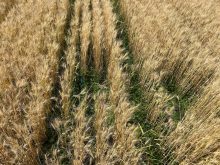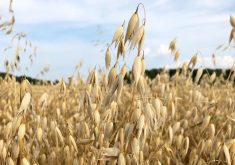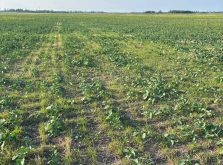
Finding the first plants or patch of clubroot on your farm is nothing to hide or be ashamed of says Autumn Barnes, an agronomy specialist with the Canola Council of Canada.
The fact is, she says for farmers in Alberta, and probably most parts of Western Canada, it is a matter of when the disease appears on your farm and not a question of “if.”
- Read more: Twelve tips to clubroot management
“We really encourage producers to be out there scouting and let authorities know if they do suspect they’ve found a case of clubroot on their farm,” Barnes told producers attending a recent canola workshop in Alberta.
Read Also

Claas brings 1000 Series SP forage harvesters to Canada
In mid-August, Claas unveiled its new line of Jaguar forage harvesters at an event in Visalia, California, deep in the heart of that state’s dairy region.
“Really, it is nothing to be embarrassed about or to hide. You’re not going to get into trouble. This is a disease that really takes a community effort to control. If some neighbouring farms in your area had clubroot, wouldn’t you want to know?”
Barnes had praise for a Rockyview County farmer (a county around Calgary) who came forward in 2018 to report the first clubroot case in that area. The producer saw a patch of canola that was underperforming — seemed to be a poorer patch compared to the rest of the field. He alerted local Agricultural Service Board authorities, they investigated and called in CCC agronomists to further check. Plant samples were sent for lab testing which confirmed it was clubroot.
Barnes says tighter canola rotations can increase the risk of clubroot disease development, but that’s not always the case. In fact, she says expect the unexpected when it comes to clubroot. “We’ve seen clubroot appear in a canola crop on land that has never grown canola before,” she says. The Rockyview County producer was following at least a two- to three-year canola crop rotation, which normally should be fine. The patch wasn’t located at a field entrance however, it was located in an area where there had been some oil and gas fieldwork several years ago. That may have started the ball rolling.
And also, she says don’t assume if you farm in an area with high pH soils that will shield you against the disease. While the disease doesn’t do as well with higher pH it can power through and still infect a crop.
Barnes says the important thing is to be proactive. Be watching for signs of the disease. Take as many precautions as you can, but when it does appear, let your local ag service board or canola specialist know, which will help the whole community kick clubroot management and mitigation efforts into high gear. “The disease spores are out there and can easily be moved around, so if you suspect clubroot, report it — it’s no- one’s fault,” says Barnes.
















